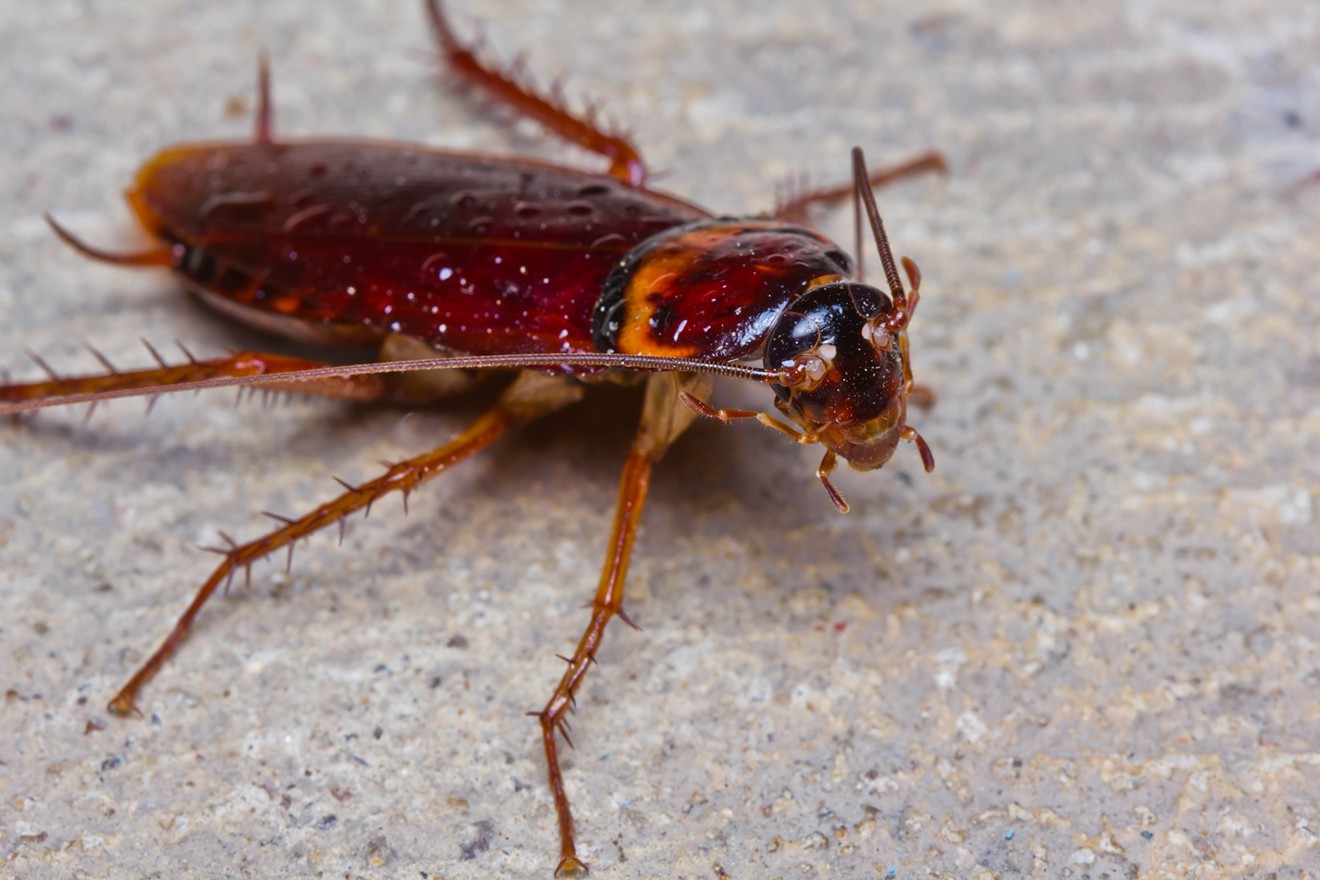Zika-carrying mosquitoes briefly destroyed Miami's tourism economy last year. And when locals aren't swatting away mosquitoes, they're blasting entire cans of Raid at palmetto bugs, South Florida's unique brand of hideous, gigantic flying cockroaches.
Now, new U.S. Census Bureau data proves Miamians were never really supposed to live in the Everglades: According to figures from the government's American Housing Survey, Miamians report dealing with the third-highest number of cockroaches compared to residents in any other U.S. city. (Bloomberg News originally compiled the study's cockroach data.)
Every two years, the Census Bureau asks Americans in the nation's 25 largest cities a host of questions, including how often they report battling roaches in their homes. In 2015, New Orleans took the top spot, after 41 percent of city residents reported a roach problem. Next came Houston, where roughly 38 percent of residents were stuck with an insect problem.
In Miami, a full 32 percent of respondents said they'd had signs of cockroaches in the past 12 months. Of the 2,005 people surveyed, 644 said they'd seen bugs. The Census
Those stats likely won't surprise longtime Miamians. The city is home to all sorts of errant wildlife, from (literal) garden-variety roaches to huge iguanas and weird, sexually perverse Muscovy ducks. After sundown, huge portions of the city begin to crawl with flapping, hissing roaches — it's not uncommon for a wayward palmetto bug to flop down in front of your living room couch while you're watching TV at night, to the chagrin of the squeamish.
It also doesn't help that new, invasive roach species keep trying to make South Florida home. In 2015, one
Then, in 2016, one National Oceanic and Atmospheric Association researcher on Virginia Key went for a
There's one silver lining to the census data, though: Miami ranked next-to-last in the nation when it came to rat sightings.












